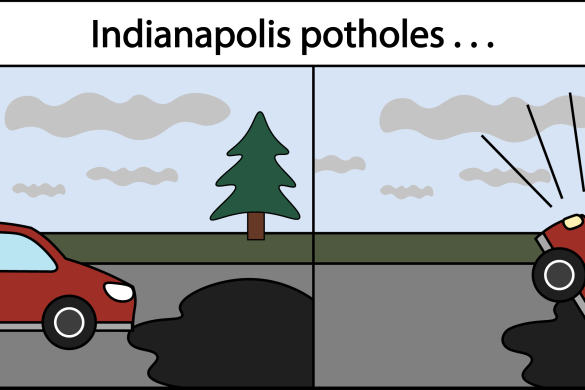Campuses across the country have started the fall semester in the middle of a pandemic, all using different methods to try to keep the number of COVID-19 cases down. The tools, methods and mandates that the University of Indianapolis has adopted have not fully equipped the university’s community to fend off the spread of COVID-19 on campus.
Not requiring testing beforehand was risky
UIndy did not require a negative coronavirus test before students, staff or faculty could return to campus, which was a risky decision. The university says it looked at other universities when formulating its plan for students’ return in the fall, but testing played a larger role in some other universities’ plans.
It’s odd that asymptomatic testing is only now being conducted as we are well into the semester rather than at the start of classes. Tests were available on move-in days for students and those who were helping them move-in, but they were only for those who filled out a health questionnaire and said that they had experienced symptoms or been exposed. The health and safety of the campus community was jeopardized by expecting all members to truthfully report their health status on easy to falsify forms.
COVID-19 testing should have been mandatory to begin with, especially since UIndy is partnered with Community Health, but at least more widespread testing is being implemented now by the university.
UIndy’s communication could be improved
UIndy had communicated effectively with its community when the campus first put its courses online in March, telling those in residence halls that they couldn’t return to campus, with the exception of those who had nowhere else to go, and providing resources through UIndy IT on how to work Zoom lectures. Now, however, UIndy is not providing students with enough information.
When the university tells the campus community what mandates it is instituting, it should explain how it is enforcing them and clarify what the expectations are when one is on campus. The university also should have had the COVID-19 campus testing dashboard ready before students came back to campus, instead of launching it after the start of classes.
If students are nervous about attending classes in-person, they may be more focused on what they’re touching and the people they’re coming in contact with rather than on the material being taught. This hampers the educational process and defeats the purpose of in-person classes. If students, faculty and staff have to be on-campus for classes or other work, they have the right to feel as safe as possible.
The UIndy community should unite to combat the virus. The university should be more transparent, provide more concrete explanations and put in place better methods of communication to the whole community to help spread information in an efficient and clear way.





